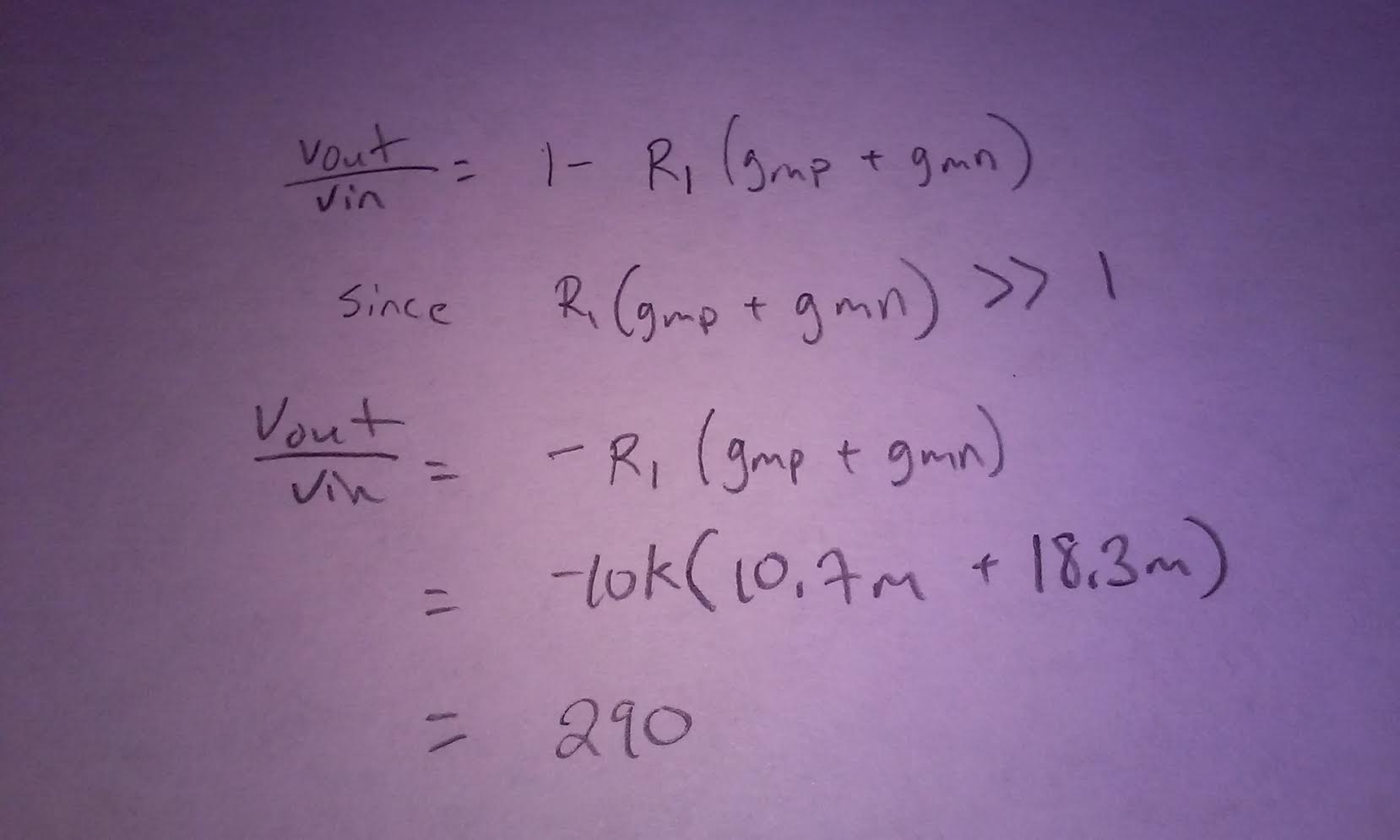EE 420L Engineering Electronics II Lab - Lab 7
03/15/2015
Design of an audio amplifier
Pre-lab work
Design an audio amplifier (frequency range from roughly 100 Hz to 20 kHz) assuming that you can use as many resistors, ZVN3306A transistors, and ZVP3306A transistors as you need along with only one 10 uF capacitor and one 100 uF capacitor. Assume that the supply voltage is 10 V, the input is an audio signal from an MP3 player (and so your amplifier should have at least a few kiloohms input resistance), and the output of your design is connected to an 8-ohm speaker (so, ideally, the output resistance of your amplifier is less than 1 ohm).
the above audio amplifier was designed by Dr. Baker and was given as an example of how an amlifier works. along with its simulation. as you can see the gain for both speaker is much smaller when the input signal was 1V at 1kHz. We tried using this circuit and hooked up our iphone using the audio jack to the input Vs and we had two 8 Ohms speakers as our output and it was expected that the output was very small we was not able to hear anything coming out of the speakers. the gain for the audio amplifier above is calculated below. This gain was calculated in lab06 of the push-pull amplifier.

Using the above circuit our output signal was very small and had alot of noises so we added a NMOS connected like below and we calculated the gain as followed.

And in the schematic we added the NMOS N3306 like below. and it gave us a slightly higher gain than the original but still not enough to hear anything coming out of the speakers.
we measured our input and output resistance as followed.
| Input Resistance | Output Resistance |
our lab experiment yield the following. and the power dissipation is 200mA * 10V = 2W. The input resistance is about 10k and the output resistance is 8 Ohms from the speakers. When we ran the lab experiment a few of our transistor was getting hot and started to malfunction giving us unwanted results.
Conclusion: Because we was not able to hear any noise coming out of the speaker, either it was too small for our ears to recognize or it was non-existence, we decided to add another stage to the amplifier to amplifier the output signal. eventually our design had 5 stages in it and we was able to hear the music coming from the iphone significantly louder with each stage that we add. eventually our amplifier looked similar to the one below. Although this is not the most efficient ways to amplifier the signal but it works best for the transistors that we are using the labs and because the output resistance of the speaker was so small it was necessary in order to hear any sounds.